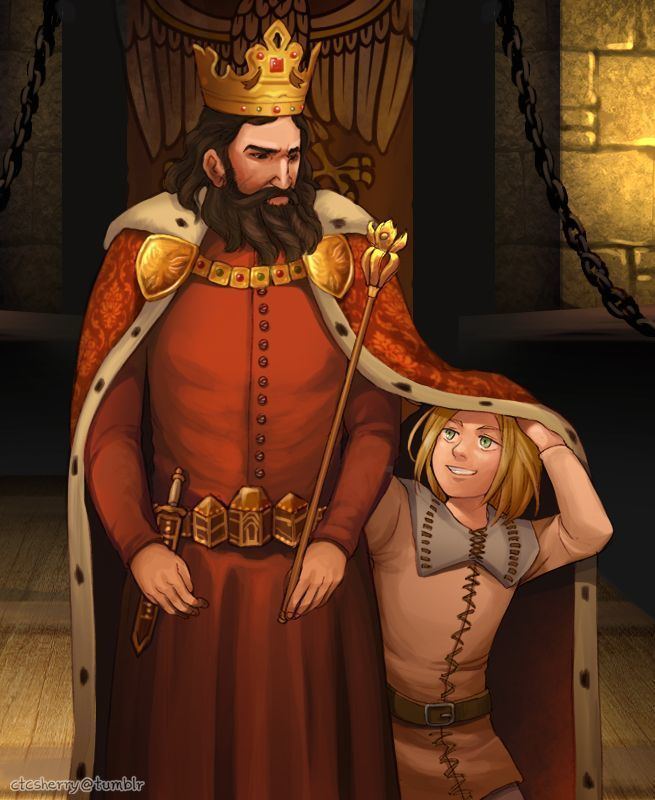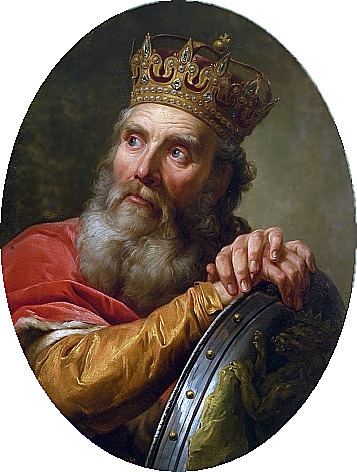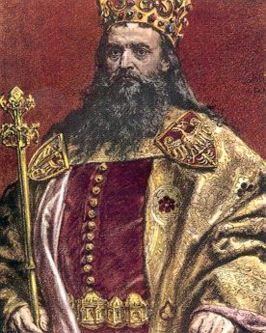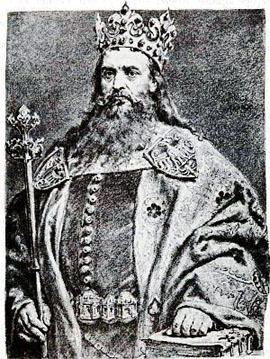Reign 1333–1370 Role King Name Casimir the | Successor Louis the Great Coronation 25 April 1333 Children Hedwig of Poland | |
 | ||
Predecessor Wladyslaw I ("the Elbow-high") Issuemore... Elisabeth, Duchess of PomeraniaAnna, Countess of Cilli Died November 7, 1370, Krakow, Poland Parents Wladyslaw I the Elbow-high, Hedwig of Kalisz Siblings Elizabeth of Poland, Queen of Hungary, Kunigunde of Poland, Stefan, Wladyslaw, Jadwiga Similar People Wladyslaw I the Elbow‑high, Wladyslaw II Jagiello, Boleslaw I the Brave, Louis I of Hungary, Mieszko I of Poland | ||
Civilization v brave new world let s play walkthrough gameplay poland casimir iii the great
Casimir III the Great (Polish: Kazimierz III Wielki; 30 April 1310 – 5 November 1370) reigned as the King of Poland from 1333 to 1370. He was the son of King Władysław I ("the Elbow-high") and Duchess Hedwig of Kalisz, and the last Polish king from the Piast dynasty.
Contents
- Civilization v brave new world let s play walkthrough gameplay poland casimir iii the great
- The Great King
- Succession
- Society under the reign of Casimir
- Relationship with Polish Jews
- Relationships and children
- Aldona of Lithuania
- Adelheid of Hesse
- Christina
- Hedwig of aga
- Esterka
- Title and style
- Popular culture
- References

Kazimierz inherited a kingdom weakened by war and made it prosperous and wealthy. He reformed the Polish army and doubled the size of the kingdom. He reformed the judicial system and introduced a legal code, gaining the title "the Polish Justinian". Kazimierz built extensively and founded the University of Kraków, the oldest Polish university. He also confirmed privileges and protections previously granted to Jews and encouraged them to settle in Poland in great numbers.

Kazimierz left no lawful male heir to his throne, producing only daughters. When Kazimierz died in 1370 from an injury received while hunting, his nephew, King Louis I of Hungary, succeeded him as king of Poland in personal union with Hungary.

Civilization v brave new world let s play walkthrough gameplay poland casimir iii the great
The Great King

When Kazimierz attained the throne in 1333, his position was in danger, as his neighbours did not recognise his title and instead called him "king of Kraków". The kingdom was depopulated and exhausted by war, and the economy was ruined. In 1335, in the Treaty of Trentschin, Casimir was forced to relinquish his claims to Silesia "in perpetuity".

Kazimierz rebuilt and his kingdom became prosperous and wealthy, with great prospects for the future. He waged many victorious wars and doubled the size of the kingdom, mostly through addition of lands in modern-day Ukraine (then called the Duchy of Halych). Kazimierz built extensively during his reign, ordering the construction of over 40 castles, including many castles along the Trail of the Eagle's Nests, and he reformed the Polish army.
At the Sejm in Wiślica, on 11 March 1347, Kazimierz introduced reforms to the Polish judicial system and sanctioned civil and criminal codes for Great and Lesser Poland, earning the title "the Polish Justinian". He founded the University of Kraków, the oldest Polish University, and he organized a meeting of kings in Kraków in 1364 at which he exhibited the wealth of the Polish kingdom. Kazimierz is the only king in Polish history to both receive and retain the title of "Great" (Bolesław I Chrobry is also called "Great", but more commonly "Valiant").
Succession
In 1355, in Buda, Kazimierz designated his nephew Louis I of Hungary as his successor should he produce no male heir, as his father had with Charles I of Hungary to gain his help against Bohemia. In exchange Kazimierz gained Hungarian favourable attitude, needed in disputes with the hostile Teutonic Order and Kingdom of Bohemia. Kazimierz at the time was still in his early years and having a son did not seem to be a problem (he already had a few bastard children).
Kazimierz left no legal son, however, bearing five daughters instead. He tried to adopt his grandson, Casimir IV, Duke of Pomerania, in his last will. The child had been born to his second daughter, Elisabeth, Duchess of Pomerania, in 1351. This part of the testament was invalidated by Louis I of Hungary, however, who had traveled to Kraków quickly after Kazimierz died and bribed the nobles with future privileges. Kazimierz III had a son-in-law, Louis VI of Bavaria, Margrave and Prince-elector of Brandenburg, who was considered a possible successor, but he was deemed ineligible as his wife, Kazimierz's daughter Cunigunde, had died in 1357 without issue.
Thus King Louis I of Hungary became successor in Poland. Louis was proclaimed king upon Kazimierz's death in 1370, though Kazimierz's sister Elisabeth (Louis's mother) held much of the real power until her death in 1380.
Society under the reign of Casimir
Casimir was facetiously named "the Peasants' King". He introduced the codes of law of Greater and Lesser Poland as an attempt to end the overwhelming superiority of the nobility. During his reign all three major classes — the nobility, priesthood, and bourgeoisie — were more or less counterbalanced, allowing Casimir to strengthen his monarchic position. He was known for siding with the weak when the law did not protect them from nobles and clergymen. He reportedly even supported a peasant whose house had been demolished by his own mistress, after she had ordered it to be pulled down because it disturbed her enjoyment of the beautiful landscape.
Relationship with Polish Jews
Due to his deep relationship with the legendary Esterka who played a significant role in the King's life, Casimir was favorably disposed toward Jews living in Poland. On 9 October 1334, he confirmed the privileges granted to Jews in 1264 by Bolesław V the Chaste. Under penalty of death, he prohibited the kidnapping of Jewish children for the purpose of enforced Christian baptism, and he inflicted heavy punishment for the desecration of Jewish cemeteries. While Jews had lived in Poland since before his reign, Casimir allowed them to settle in Poland in great numbers and protected them as people of the king.
Relationships and children
Casimir III was born in Kowal, and he married four times. Casimir first married Anna, or Aldona Ona, the daughter of Grand Duke Gediminas of Lithuania. The marriage produced two daughters, Cunigunde (d. 1357), who was married to Louis VI the Roman, the son of Louis IV, Holy Roman Emperor, and Elisabeth, who was married to Duke Bogislaus V of Pomerania. Aldona died in 1339, and Casimir then married Adelaide of Hesse. He divorced Adelaide in 1356, married Christina, divorced her, and while Adelaide and possibly Christina were still alive (ca. 1365), he married Hedwig of Głogów and Sagan. He had three daughters by his fourth wife, and they were still very young when he died, and regarded as of dubious legitimacy because of Casimir's bigamy.
Aldona of Lithuania
On 30 April or 16 October 1325, Casimir married Aldona of Lithuania. She was a daughter of Gediminas of Lithuania and Jewna. They had two children:
Aldona died on 26 May 1339. Casimir remained a widower for two years.
Adelheid of Hesse
On 29 September 1341, Casimir married his second wife, Adelaide of Hesse. She was a daughter of Henry II, Landgrave of Hesse, and Elizabeth of Meissen. They had no children. Casimir started living separately from Adelaide soon thereafter. Their loveless marriage lasted until 1356.
Christina
Casimir effectively divorced Adelaide and married his mistress Christina Rokiczana, the widow of Miklusz Rokiczani, a wealthy merchant. Her own origins are unknown. Following the death of her first husband she had entered the court of Bohemia in Prague as a lady-in-waiting. Casimir brought her with him from Prague and convinced the abbot of the Benedictine abbey of Tyniec to marry them. The marriage was held in a secret ceremony but soon became known. Queen Adelaide renounced it as bigamous and returned to Hesse without permission. Casimir continued living with Christine despite complaints by Pope Innocent VI on behalf of Queen Adelaide. The marriage lasted until 1363–64 when Casimir again declared himself divorced. They had no children.
Hedwig of Żagań
In about 1365, Casimir married his fourth wife Hedwig of Żagań. She was a daughter of Henry V of Iron, Duke of Żagań and Anna of Mazovia. They had three children:
With Adelheid still alive and Christina possibly surviving, the marriage to Hedwig was also considered bigamous. The legitimacy of the three last daughters was disputed. Casimir managed to have Anne and Cunigunde legitimated by Pope Urban V on 5 December 1369. Hedwig the younger was legitimated by Pope Gregory XI on 11 October 1371.
Esterka
Esterka was the only one who gave him male offspring. She had a significant place in Casimir's life. She was legendary beautiful and intelligent women who even performed as a king's adviser in support of varies initiatives: building stone cities, tolerance to representatives of different religious faiths, free trade and support of cultural development.
It was her who grounded foundation of a tolerant attitude towards Jews in Poland and it was laid for centuries, making this country "a paradise for the Jews". Casimir was not only loyal to the Jews, but also encouraged them, as a result of it the country experienced phenomenal economic and cultural growth. Casimir was called The Great King for his wiseness. The sons of King Casimir and Esterka Pelko and Nemir were baptized at the request of father and became the ancestors of several Polish noble families: Rudanovsky and . To develop legal and commercial relations between Jews, Poles and Germans, Pelko was sent to Konitz and his brother Nemir in 1363 to the southwest to Lower Silesia to participate in the foundation of the city of Neurode, which later became the patrimonial nest of the new Nourode's Rudanovsky dynasty.
Title and style
Casimir's full title was: Casimir by the grace of God king of Poland and Russia (Ruthenia), lord and heir of the land of Kraków, Sandomierz, Sieradz, Łęczyca, Kuyavia, Pomerania (Pomerelia). The title in Latin was: Kazimirus, Dei gratia rex Polonie et Russie, nec non Cracovie, Sandomirie, Siradie, Lancicie, Cuiavie, et Pomeranieque Terrarum et Ducatuum Dominus et Heres.
